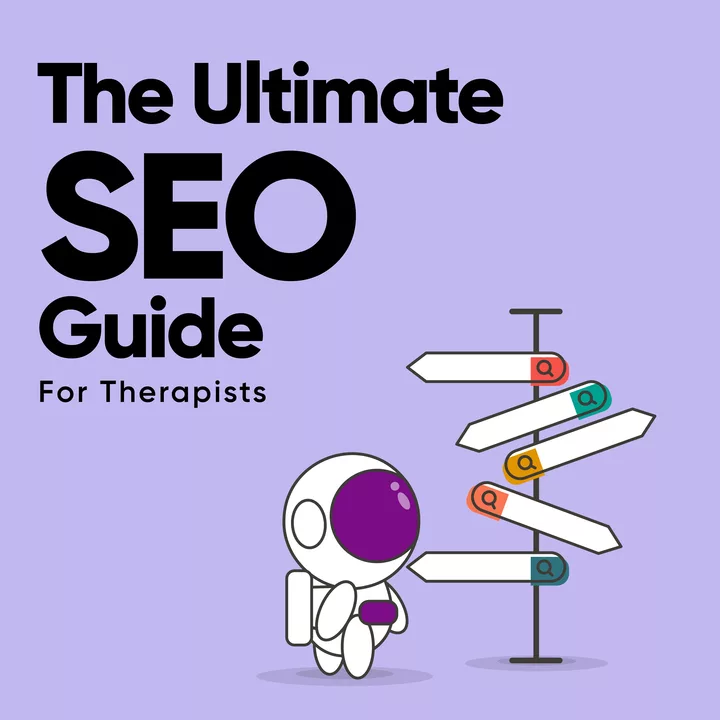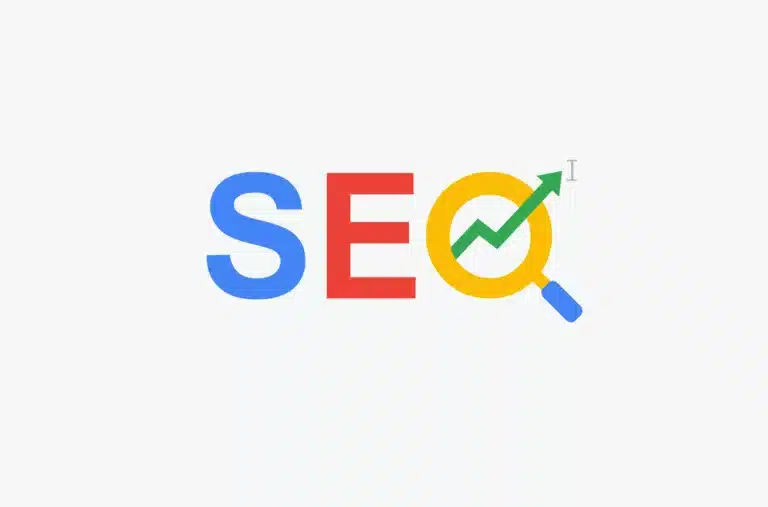
The Ultimate SEO Guide For Therapists

Whether you’re a newly-practicing therapist or have been in private practice for a while now, you’re probably thinking about how you can elevate your business so you can reach more potential clients.
Luckily, the internet has made it easier for therapists like you to reach a more extensive client base. You can start by having your own website and establishing your presence on social media sites like Facebook.
However, remember that making your mark online and maintaining your presence are two entirely different things; you have to invest time and money into keeping your website afloat, or else you can’t maximize the benefits of your online identity.
Search Engine Optimization, or SEO, is a great way to make your practice known to internet users looking for the services you offer. Even better, SEO gives you measurable results that can improve future campaigns—provided that you know how to make SEO work for your website.
Curious about how you can make the most out of SEO? We’ve put together some important SEO basics as well as strategies that can ramp up your website’s performance.
Ready to dive in? Let’s start by breaking down the basics of SEO for therapists:

What is SEO?
As we’ve mentioned above, SEO is the ongoing process of maintaining your online presence so it can be recognized by search engines like Google or Bing. It involves using a mix of tried and tested SEO strategies and tools that will help your website improve its search engine rankings.
So, let’s say person A wants to look for a therapist practice within their immediate area. What they do is open their smartphone or desktop, go to a search engine like Google, and enter the keywords that best reflect what they are looking for. For example, they might search for “CBT therapist in Atlanta.” What Google then does is pull up a list of therapist websites that are available in their local area. Person A will most likely click on websites that are available on the first page of the search engine results.
Your goal here is to take advantage of SEO methods to ensure your practice appears on the first few pages if not the very first page of search results attributed to specific keywords.
There are thousands upon thousands of therapist websites out there, so if your site isn’t optimized for SEO, you might find it hard to show up on search engines and users won’t be able to find your site. This is why it’s important to ensure your website ranks well for the right therapist keywords, looks amazing across all devices, has the right backlinks, has engaging, high-quality content, and has great on-page SEO performance. We’ll be digging deeper into these SEO strategies as we go further.
How Can SEO for Therapists Help Your Private Practice?
Your private practice can definitely soar to greater heights once you have a website that’s built-in with the right SEO strategies. Not only will internet users find your site, but you can also ensure that the right users will click on your website and see the services you offer.
Another great benefit of SEO is that it provides website owners with measurable, data-driven results. This means you can easily track how your site has been performing, what strategies work well for you, and what methods need more fine-tuning so they can work better with the other elements of your campaign.
Consistently improving your SEO campaign allows you to use these strategies to your advantage and make your site perform better in the long run.

What is The Difference Between Google Business Profile and SEO?
It’s easy to confuse Google Business Profile and SEO because of the highly similar services and benefits they provide, at least at the surface level. However, once we get into the details, we’ll see that these are two entirely different online strategies that provide different results as well.
The main goal of SEO is to help your website rank better in search engine results and drive traffic by targeting specific keywords that are relevant to your practice.
It also aims to boost your website’s credibility by incorporating links from high-authority online sources. A higher number of quality links means more chances of your site appearing on the first pages of search engine results.
On the other hand, a GBP listing is specifically linked to Google maps, and the results are curated for users based on a combination of their current locations and the strength of the GBP listings in their vicinity.

Keywords: The Foundation of Therapist SEO
A successful SEO strategy is built upon using a mix of phrases and words that relate to your practice. These are called keywords, and these help your site become high-quality, relevant, and engaging so Google can identify your website and find out when and where to display your site content.
There are two keyword types that you can use for your therapist website, namely short-tail keywords and long-tail keywords
What Are Short-Tail Keywords?
Short-tail keywords, or head terms, are usually no more than 3 words and cover general searches like “forensic psychologists” or “trauma therapy”. The competition for this keyword type is high because users tend to search more using these words, and websites that rank high for short-tail keywords can generally attract more visitors.
However, this doesn’t mean that you should go and incorporate every head term you find—this is called keyword stuffing and is a big no-no. These types of keywords are usually very generic and don’t filter out the right audience for your practice, which could lead to lower conversion rates for your website.
What Are Long-Tail Keywords?
With SEO, you want to attract site visitors that are actually willing to pay for your services—this is where long-tail keywords can help. Long-tail keywords are precise search terms like “counseling services that accept Medicaid” or “therapists for post-traumatic stress disorder”.
A typical long-tail keyword search can also include a distinct location, like “Maryland”. Combine this with our example above, and it looks something like this:
“Therapist for post-traumatic stress disorder in Maryland”
“Counseling services that accept Medicaid in Maryland”
Clear-cut, long-tail search terms will allow you to target people who are looking for your services within your preferred area, which is great news for your website’s conversion rates and traffic.
Long-tail keywords have lower search volumes compared to broader search terms, but this doesn’t mean that your website won’t benefit from these types of keywords.
In fact, since keywords like this come from users with actual search intent, they are more likely to avail of your therapist practice’s services. This means your website could have higher conversion rates if you choose to rank for long-tail keywords.
What’s more, if your website is still relatively brand new and you’re looking for a way to make it to search engine pages, using long-tail keywords on your site content is an easier way to go instead of fighting for your place on the top spots of high-volume generic search terms.
Another benefit of ranking on long-tail keywords is their lower bid rate compared to short-tail keywords. If you choose to take things further in the future and pay for search engine ads, bidding for long-tail keywords means you won’t have to shell out as much while still making sure your website gets you the audience you want.

How To Do Keyword Research: A Step-By-Step Guide
Now that you know the benefits of incorporating keywords into your website, we can now determine how you can find the right keywords that fit your therapist practice.
There are lots of keywords you can use for your site, but finding the most appropriate ones will save you a lot of time and ensure your content is authoritative and looks amazing throughout. This process is called keyword research.
This involves three major steps—finding the right keywords, analyzing these keywords, and targeting them so you can better rank for your preferred keywords.
How Do You Find The Right Keywords For Your Practice?
The easiest way to find the keywords you want for your practice is to use a keyword research tool. These tools comb through the internet and pull up an extensive range of short-tail and long-tail suggestions. This can also show you the search volume, competitor rankings, and even bid values. You can use this information to analyze whether your site can benefit from ranking for a particular keyword.
There are lots of free keyword research tools online, with each tool delivering various metrics and data. Once you’ve decided on what keyword research tool you want to use, you can start by entering a seed keyword, a broader search term which your practice falls under.
For example, if you’re a psychologist and you want to attract potential clients to your brand-new website, a great seed keyword would be “psychologist services”. This will trigger the tool to look for specific search terms that are relevant to your seed keyword.

Analyzing Your Keywords
Let’s say you’ve chosen “comprehensive psychology services” as your preferred keyword. The next thing you need to look for is its search volume and keyword difficulty. These metrics will help you find out whether it will be easier to rank for that keyword or otherwise.
Search volume tells you how many times web users enter a particular keyword on Google every month. If the search volume is high, your website could potentially receive higher levels of traffic if you can rank well for that keyword.
Keep in mind, however, that higher search volumes mean higher competition as well. Keyword difficulty is another metric that looks at page quality, domain authority, and content quality to tell you exactly how hard it is to rank for your chosen keyword.
Let’s look back at our previous example. Maybe you’ve found that “comprehensive psychology services” have low search volume and low keyword difficulty metrics. This means that while not a lot of users search for this term, you may have a bigger chance of ranking well for this keyword, and you’ll attract site visitors with higher search intent. This is usually the case for long-tail keywords.
If your keyword has high search volumes and keyword difficulty data, it’s an indication that there is a lot of competition for this keyword, and you might have a hard time boosting your rankings.
Some keyword research tools also allow you to analyze your competitor’s rankings. Once you find out what your competitor’s brand keywords are and how they rank, you can use this as an opportunity to target those keywords as well.
Targeting The Right Keywords
Once you’ve listed the keywords you want to rank for, it’s time to create a corresponding strategy that will help boost site traffic for your targeted keywords.
The first thing you need to do is conduct a SERP analysis. SERP, or Search Engine Results Page, is the first page that appears when a web user enters a search query. The SERP contains paid search ads as well as organic search results that appear immediately below the paid results.
Next, you need to find out the search intent for your preferred keyword. There are four major search intent types that you need to look out for:
- Navigational intent: web users are looking for a specific brand or website (e.g., American Psychological Association)
- Informational intent: web users are looking for information about a certain topic (e.g., what does a trauma therapist do)
- Transactional intent: users want to buy a specific product or service (e.g., psychiatrist services in Maryland)
- Commercial intent: users want to research a certain product or service before making a purchase (e.g., practicing trauma therapists in Maryland)
This will help you identify whether a keyword’s search intent is relevant to your therapist website’s content.
Let’s take as an example our “comprehensive psychology services” keyword. You’ve already found out that its search volume and keyword difficulty are low, and you want to rank for this by incorporating it into a blog post for your site.
However, your analysis shows that the SERP for this keyword pulls up a list of psychologist practices instead of blog posts. This means that your website might not appear for this search term because the intent does not match your planned content. What you need to do now is to look for another relevant keyword with informational intent.
If you’ve already found a keyword that matches your search intent and has acceptable search volume and difficulty levels, you can now start optimizing your website content for your keyword of choice.
On-Page SEO
On-page SEO is the process of making changes to certain webpage elements to boost site traffic while making sure your website performs well in search engine rankings.
Google will look at things like internal links, alt tags, meta titles, and on-page content. Improving these elements on your site will help Google determine whether your site matches a user’s search intent and display your site higher on the search results page.
We’ll be discussing these site elements as we go along and find out how these can contribute to an effective on-page SEO strategy.
Getting Indexed By Google
Indexing is Google’s way of deciding how a website should rank and what its contents are all about. No one knows how Google ranks websites—it’s top-secret information—but what we do know is that Google tends to prioritize sites that have engaging content, high-quality internal links, and user-friendly web pages.
So, how can you make sure your website gets indexed by Google? Let’s take a look at some of the tried and tested strategies below:

Optimizing Your Website For Speed
We’ve mentioned before that Google gives top rankings to websites with amazing user experience, so if your site isn’t optimized for speed, you’ll be missing out on potentially higher rankings and customer retention.
Before you can start optimizing your site’s load speed, you first need to find out what elements you need to fix. You can use free online tools like GTmetrix to test your website’s speed.
Once you have your speed test results, you need to look at your site’s core web vitals, which have three major factors:
- Largest Contentful Paint (LCP): The actual time it takes for a web page to load from a user’s point of view
- First Input Delay (FID): Your website’s response time to user interaction (e.g., clicking on a site link or entering terms in a search field)
- Cumulative Layout Shift (CLS):
These core web vitals will help you identify what exactly you need to do to speed up your website. If your LCP score is low, you might need to downsize certain elements of your site or change your web host.
On the other hand, if your FID score is below average, you could consider using a browser cache to help site content load faster. Lastly, you can improve your CLS score by designating a space for ads and applying fixed-size attributes to all media on your website.

Meta Titles And Alt Tags
Meta Titles
Having high-quality meta titles on your website is a crucial part of any SEO strategy. Search engines use meta titles to index your website, analyze its content and rank it according to relevance.
What’s more, since effective meta titles can help your website generate click-through rates (CTR) from search engines, higher CTRs could give your site the credibility it needs to improve its ranking.
So, how can you make your meta titles stand out? You only have to take note of a few things:
- Meta titles must be short and sweet, preferably nothing higher than 55-60 characters
- Incorporate relevant keywords so search engines know exactly what your site is about
- Avoid keyword stuffing
- Use active voice when writing meta titles
- Include a call-to-action that can attract potential site visitors
Alt Tags
Alt tags, on the other hand, are the text used to describe the form and function of images on a website. This helps search engines crawl and rank your website better. It also provides essential information for screen-reading tools used by visually-impaired site visitors.
Optimizing your alt tags is a great way to improve your site’s accessibility and user experience, and it also serves as a contingency measure just in case your site images fail to load.
So what does an alt tag look like exactly? There are a lot of variations of course, but generally, it looks something like this:
<img.src=”therapist.png” alt=”young woman holding a clipboard and shaking hands with another woman”>
Alt tags are ideally highly descriptive because aside from the SEO benefits, we’re also prioritizing users who rely on screen readers to navigate the internet.
When writing alt tags, there are a couple of things you need to keep in mind:
- Write your alt tags in the most descriptive and graphic way possible
- Alt tags should ideally not exceed 125 characters
- Incorporate keywords but avoid keyword stuffing
- Don’t include words like “picture of” or “image of”

Link Building
Link building is one of the most tried and tested strategies when it comes to boosting website credibility. If your site has an outstanding number of links from high-authority resources, you have a better chance of getting noticed by Google and ranking competitively for your preferred keywords.
Conversely, if other websites incorporate your links into their content, this will allow visitors from that website to check out your site, giving you a vote of confidence from users and even search engines. This will also drive your site’s referral traffic upwards.
There are lots of ways for you to start building external links, but a great starting point is to create high-quality content that other websites can link to. This could be in the form of infographics, videos, blogs, tutorials, and even online tools that are relevant to your practice.
You can also conduct manual link building by adding links to social media profiles, blog comments, forums, and business directories. Keep in mind, however, that this is considered one of the least effective link building strategies because it doesn’t link to high-authority sources.
So, how can you create noteworthy, engaging content that attracts more users and drives your site traffic? Let’s discuss content creation below.

Content Creation
We’ve already mentioned countless times that the key to an effective SEO strategy lies in your website’s content. Now that we’ve discussed how to find, analyze and target your keywords of choice, it’s time to discover the actual process of incorporating these keywords into your site content.
When it comes to building your website’s content repository, you can opt for informational blogs, evergreen content like how-to articles, infographics, and other visual content.
Your website might be rich in content quantity-wise, but if your content doesn’t pass Google’s standards, you’ll be wasting time and money and you won’t be able to reap the benefits of creating high-quality content for your practice.
Writing great content for your website will involve a lot of research and fact-checking while also making sure that it adheres to search engine standards. Here are a few things you need to remember:
- Your content must be factual, authentic, and readable
- Keywords must be incorporated as seamlessly as possible while avoiding keyword stuffing
- Include quality external links from websites that are relevant to your therapist practice
- Use a mix of graphics and written content
Off-Page SEO for Therapists
Off-page SEO are tactics implemented outside of websites that are still targeted toward improving your site’s search engine rankings. Think of it as promoting your business and building brand awareness so Google and internet users can recognize your site’s credibility and trustworthiness.
This involves listing your business on therapist directories and local directories, going on podcasts, and writing guest posts for other websites that are relevant to your therapist practice. Let’s take a look at how these off-page SEO practices can benefit your website.
Therapist Directories
As a therapist, the easiest way for you to make your business known is by signing up on therapist directories. This will give your site the authority it needs.
A lot of medical professionals also use directories when they’re referring a patient to another medical practitioner. Plus, it can ensure that people who have a genuine interest in your practice can easily find your website.
There are a lot of therapist directories you can sign up for. This includes Psychology Today, Good Therapy, Better Help, and the Anxiety Disorders Association of America.
The key to making the most out of your listing is to create a comprehensive therapist profile that speaks to potential clients and highlights the important details of your practice.
It would also be helpful if you can identify what modalities and methods you’ll be using during therapy sessions. This will help prospective clients decide whether your approach will suit their needs or otherwise.
Local Directories
If you’re looking to attract more potential clients from your immediate area, signing up on local directories is a great way to go. A good starting point would be to sign up for Chamber of Commerce directories that cover your preferred area.
Let’s say you’re a Maryland-based therapist that specializes in treating anxiety disorders. You can narrow down your directory options according to your specialty by searching “anxiety disorder treatment Maryland” or “therapist directories in Maryland”. This will help you find the local directories you need.
If you find that there’s more than one therapist directory in your local area, you can sign up for the most popular ones, list your website on specialized directories, or ask your colleagues for directory suggestions.

Going On Podcasts
Going on podcasts is a popular off-page SEO method that allows you to show off your practice while building your website’s authority. What’s more, podcasts could link to your website if you’re a guest.
You can also suggest content from your site if they’re looking for additional information on the topic you’ll be discussing. Podcasts are also a great way to educate the general public about your particular field of expertise.
This is also an example of evergreen content since podcasts do not expire. It will usually be always available on the internet for potential clients to listen to.
While it’s much more ideal for you to go on more podcasts as you go forward, your previous podcasts can still provide the foundation you need to establish your practice online and build your off-page SEO strategy.
Writing Guest Posts For Other Websites
Just like going on podcasts, writing guest posts for other websites can also do wonders for your off-page SEO strategy. Guest bloggers are usually invited by websites to write about their field of specialty, which has a lot of benefits especially if you’re just starting to build your digital footprint.
Your guest blog content will help you establish your site’s domain authority while making your practice known to industry peers and colleagues. Plus, blog sites will usually allow you to insert at least one backlink from your website which can increase your referral traffic.
This is also a great opportunity for you to make your practice known to potential clients. Not only will your guest blog post serve as a source of information, but it will also expand your audience reach and improve your brand awareness.
This will also drive your content marketing strategy upwards and shorten your sales cycle. Lastly, it will allow you to immediately target customers who are genuinely interested in your services.
Are You Ready To Start Building Your SEO Strategy?
Now that you know the basics of establishing your digital footprint via SEO, what you need to do next is to entrust your therapist website to a reputable SEO services company that will create an SEO plan that works for you.
Strong Roots Web Design has an extensive range of SEO services that will help you boost your online presence and drive your website’s digital traffic. We’ll be taking care of everything including mobile optimization, content creation, on-page and off-page SEO, keyword research and strategy, and more.
Did you like this blog post or have you tried any of these SEO strategies we’ve talked about? Share it or leave a comment below!
How can we help YOUR practice grow?
FULLY-CUSTOM WEBSITE: We'll create your website content, and design a custom website just for you!
SEO: Rank higher in search results with Search Engine Optimization.
Did you like this post? Share it!
Related Reads for SEO
- Website Performance Optimization for Therapy Websites
- Find the Right Keywords For Blog Post | Local SEO Strategies
- Unlocking the Power of SEO Keywords for Therapists
- Do I Need An SSL Certificate For My Website – Security for Your Therapist Website
- SEO For Therapists: The Ultimate Guide
- Responsive Website Design Service For Therapists
- 3 Best Tips in SEO for Therapist Websites
- How Adding A Blog To Your Website Helps Your Therapy Business
Need any of the following?
Here are some Sample Websites We’ve Created:
Check out our Portfolio for more!


1 thought on “The Ultimate Guide on SEO For Therapists”
Thank you for the valuable information on the blog.I am not an expert in blog writing, but I am reading your content slightly, increasing my confidence in how to give the information properly. Your presentation was also good, and I understood the information easily
https://1stepgrow.com/advance-data-science-and-artificial-intelligence-course/.